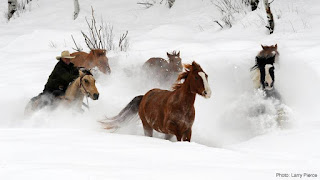 |
| There's light at the end of the tunnel. |
Here is a powerful communal storytelling
process adapted from Michael White’s Maps
of Narrative Practice. It is based on storytelling work observed in
the 1970s by cultural anthropologist Barbara Myerhoff with a community of
elderly Jewish immigrants in Los Angeles.
Many of these people had migrated to
the United States from the shtetls of
Europe at the beginning of the twentieth century and had lost their extended
families in the Holocaust; a number had outlived their own children. The result
was a sense of isolation from the rest of the community, a sense of
invisibility, which manifested in depression, deeper isolation, loneliness, and
frail health.
With help from a community
organizer, these elderly citizens created a community in which they could
recuperate, be re-energized, and regain their sense of existence. They did this
through telling and retelling, performing and re-performing the stories of
their lives. It was in these small story sanctuaries that these old people had
the opportunity to become visible on their own terms. Meyerhoff called these
experiences definitional ceremonies—the storytellers got to
define themselves and be witnessed.
In the 1980s and 1990s, Australian
family therapists White and his colleague David Epson, who had been using
narratives with families, began to experiment with Myerhoff’s definitional
ceremonies. In White’s and Epson’s practice, the therapist maintained his/her
central role and elicited the stories through interviewing the clients and
their selected witnesses.
In the process described below, the
therapist or facilitator steps back from their central role as interpreter and
expert. After explaining the process to storytellers and witnesses, the
facilitator does not intervene except to gently keep the process on track and
focused on the central storyteller’s sharing. I call these storytelling and
story listening experiences ceremonies of
engaged witness.
1. Tell a story, recite a poem, or use the fairy
tale exercise to write a story. This builds a safe container and creates a
focusing theme for participants in this experience. I often use myths and fairy tales, as they release people from
“reality” into connection with their imagination, intuition, and inner lives.
Also, these old stories are metaphors for present experience and, as such, are
not invasive. I’ve never seen it fail: people universally and viscerally
respond to fairy tales and classic myths.
2. Invite a collective response to it. Each
member gets to say what sensory images, phrases, or dramatic moments stand out
for them. This is the creative question. Not why. Rather, what resonates.
Anyone can share. No one has to.
3. Invite private writing time. Each person
finds their own private “studio” space, and when they’re settled, ask each to
write down five words that come immediately to mind. Invite them to choose the
word that most captures their imagination, and make that the first word of an
improvisational piece of writing. Give them five to fifteen minutes for this
exercise, deciding at the outset how much time you’ll have and affirming that
everything they need to say will come out in this time. I often play meditative
music during this period to create safety and privacy within the group.
4. Invite reading for whoever
wants to share with the group. Again, everyone is invited. No one has to.
5. Invite each witness to tell what they heard
in the reading, without interpreting, analyzing, giving advice, or judging in
any way. Ask the listeners to reflect back only what they heard and felt—their
direct emotional experience of the piece that’s just been read. This is the
critical and catalytic part of the process.
6. Listeners, focus your feedback on the
following areas without being rigid or judgmental:
·
Images, rhythms, shifts in tone that stand out and the felt sense,
atmosphere, or mood you get from the piece of writing you just heard;
·
What matters to the storyteller or the character they’ve written
about;
·
Go further. What areas or memories in the listeners’ personal life
that they may have forgotten are lit up by hearing this. (This last step is not
necessary but heightens the catalytic process in merging storyteller and witness
stories, and moves everyone upward and outward into a larger story.)
7. Invite the reader/storyteller to retell the retelling. Reader gets
the last word: Ask what stands out for them in what they’ve heard from the
group.
8.
Finally, translate
the metaphorical expression of art into concrete reality by asking the teller
questions: “What does this look like in your life? What is life asking of you now?”
The importance of this last step cannot be
overestimated. It’s the bridge out of metaphor back to “real” life. It grounds
the creative experience in concrete action, while at the same time helping
participants come forth from the vulnerable place within that may have been
opened in this process.
-----
To book a constituents' workshop or professional training, please write me at julietbrucephd@gmail.com.











